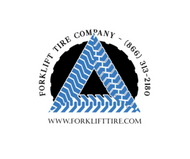23rd Mar 2025
How to Overcome Forklift Challenges in Cold Storage
Operating a forklift in cold storage environments presents unique challenges due to extreme temperatures, high humidity, and floor conditions. Cold temperatures can cause condensation buildup, leading to engine and electrical issues, while slippery floors increase the risk of accidents. Additionally, cold storage environments can negatively affect forklift battery performance, reducing run time and causing unexpected downtime.
To maintain forklift efficiency and ensure a safe work environment, it’s essential to understand these challenges and implement best practices. Below, we’ll explore the most common problems and provide expert solutions to keep your forklift operating at peak performance in cold storage conditions.
1. Condensation Issues and Engine Damage
One of the biggest threats to forklifts in cold storage is condensation. When a forklift moves between a cold storage facility and a warmer area, condensation forms on its metal surfaces and internal components. Over time, this moisture can corrode the engine, electrical connections, and key mechanical parts, leading to expensive repairs and potential breakdowns.
Additionally, condensation can lead to ice formation when the forklift is returned to freezing temperatures too quickly. This can cause parts to seize up or become brittle, further impacting performance and longevity.
Solutions to Prevent Condensation Damage:
- Keep forklifts in cold storage for a full shift to minimize frequent temperature fluctuations. Avoid unnecessary movement between cold and warm areas.
- Allow time for drying before returning to cold storage. When a forklift is exposed to warmer temperatures, ensure it has enough time to dry completely before being used again in freezing conditions.
- Use corrosion-resistant components. If possible, invest in forklifts designed for cold storage, which feature rust-resistant coatings and moisture-proof electrical systems.
- Apply anti-corrosion spray to key components and electrical connections to reduce the effects of moisture buildup.
- Store forklifts in temperature-controlled docking areas when not in use to allow for gradual warming and drying.
2. Slippery Floors and Traction Problems
Cold storage environments often have high humidity levels, leading to condensation buildup on floors. This creates slick, icy surfaces that make maneuvering a forklift more difficult and dangerous. Operators may experience skidding, loss of control, and even accidents if the forklift tires do not provide adequate traction.
Solutions to Improve Forklift Traction:
- Use polyurethane forklift tires. These tires provide excellent grip on wet and icy surfaces due to their unique tread design.
- Opt for tires with micro-grips or siping patterns. These features help channel moisture away from the tire surface, improving traction.
- Regularly inspect floors for ice buildup. Encourage routine cleaning and de-icing to prevent slippery conditions from worsening.
- Train operators in cold storage safety procedures. Ensure that drivers are aware of reduced traction and adjust their driving speed accordingly.
- Consider heated flooring or anti-slip coatings. If your facility experiences extreme moisture buildup, installing heated flooring or slip-resistant coatings can reduce accidents.
3. Reduced Battery Efficiency in Cold Storage
Cold temperatures have a direct impact on forklift battery performance. A forklift battery can lose up to 30% of its run time in freezing conditions. This is due to the fact that chemical reactions inside the battery slow down at lower temperatures, reducing its ability to hold and discharge power efficiently. Additionally, condensation can form on the battery terminals, increasing the risk of electrical issues.
Solutions to Maintain Forklift Battery Life in Cold Storage:
- Choose high-capacity batteries designed for cold environments. Some forklift batteries are specifically engineered for low temperatures, offering better performance and longevity.
- Keep batteries fully charged. Always ensure that forklift batteries are fully charged before starting a shift to minimize unexpected downtime.
- Store spare batteries in temperature-controlled areas. Keeping extra batteries in a slightly warmer environment will help maintain their efficiency and extend their lifespan.
- Use insulated battery covers or heating elements. These accessories help maintain battery temperature and prevent drastic efficiency losses.
- Schedule regular battery maintenance. Cleaning terminals and checking for condensation or corrosion can help prevent unexpected electrical failures.
4. Additional Maintenance Tips for Cold Storage Forklifts
In addition to the major challenges outlined above, forklifts operating in cold storage require specialized maintenance to prevent wear and tear. Cold temperatures can cause hydraulic fluids to thicken, reduce lubrication efficiency, and lead to brittle seals and hoses.
Key Maintenance Practices for Cold Storage Forklifts:
- Use cold-weather lubricants. Switch to low-temperature hydraulic fluids and greases to maintain proper lubrication in freezing conditions.
- Inspect seals and hoses regularly. Cold temperatures can make rubber components brittle, increasing the risk of leaks or breakage.
- Check electrical systems frequently. Corrosion from condensation can affect wiring, connectors, and controls, leading to malfunctions.
- Monitor tire pressure. Temperature fluctuations can cause air-filled tires to lose pressure, impacting stability and performance.
Implementing a preventative maintenance program specifically tailored to cold storage conditions will extend the lifespan of your forklift and reduce unexpected repair costs.
Final Tips for Forklift Cold Storage Operations
While specialized cold storage forklifts exist, not every business can invest in them. If you are using standard forklifts, follow these best practices to keep them running efficiently:
- Minimize extreme temperature fluctuations to prevent condensation buildup and freezing damage.
- Use high-traction polyurethane tires to improve maneuverability and reduce the risk of accidents on slippery floors.
- Invest in high-performance batteries to ensure optimal efficiency and prevent unexpected power losses.
- Use cold-weather lubricants and conduct regular maintenance to keep hydraulic systems and electrical components in peak condition.
- Train forklift operators on best practices for driving in cold storage environments to improve safety and reduce wear on equipment.
By implementing these strategies, you can optimize your forklift’s performance and longevity in cold storage environments, minimizing downtime and improving operational efficiency.
At Forklift Tire Company, we specialize in premium forklift tires designed for cold storage operations. Shop online for the best deals or contact our customer service team at sales@forklifttire.com for expert advice on selecting the right tires for your forklift.






